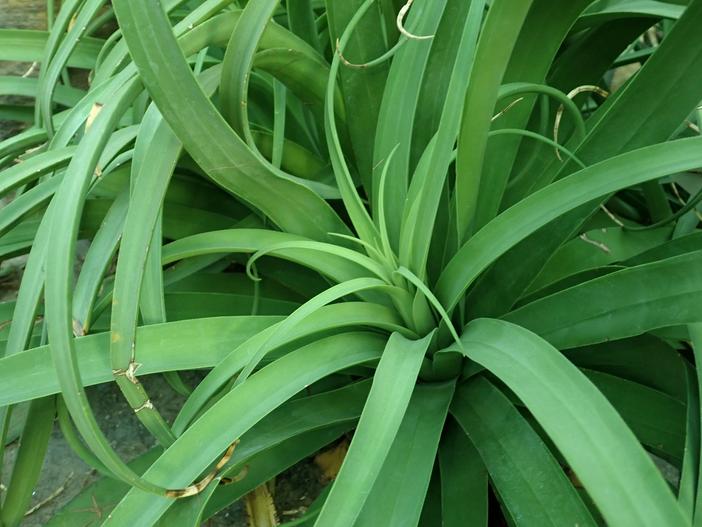Squid Agave
(Agave bracteosa)
Squid Agave (Agave bracteosa)
/
/

Salicyna
CC BY-SA 4.0
Image By:
Salicyna
Recorded By:
Copyright:
CC BY-SA 4.0
Copyright Notice:
Photo by: Salicyna | License Type: CC BY-SA 4.0 | License URL: https://creativecommons.org/licenses/by-sa/4.0 | Uploader: Salicyna | Publisher: Wikipedia Commons

















Estimated Native Range
Summary
Agave bracteosa, commonly known as Squid Agave, is an evergreen succulent native to the rocky slopes and oak woodlands of Northeastern Mexico. It is a smaller species of agave, with distinctive green succulent leaves that are long and lanceolate, measuring 50–70 cm in length and 3–5 cm at the base, where they are the widest. The leaves often curl, resembling the tentacles of a squid, which is a characteristic that sets it apart from its relative, the octopus agave (A. vilmoriniana). Squid Agave produces a relatively short inflorescence spike, 1.2–1.7 meters tall, with the upper third densely covered with white or pale yellow flowers. These flowers are unique for their tepals that arise from a disk-shaped receptacle, a departure from the more common tubular structure, and they feature notably long stamens. Flowering typically occurs in late spring to early summer.
Squid Agave is valued for its sculptural foliage and low maintenance requirements, making it a popular choice for rock gardens, xeriscaping, and as a container plant in regions with colder climates. It thrives in full sun, requiring very low to low amounts of water, and prefers soils with fast drainage to prevent root rot. While it is generally free of serious pests and diseases, overwatering can lead to fungal issues. Squid Agave is not known for aggressive roots or significant invasiveness, but it should be planted with care to avoid the sharp leaf tips.CC BY-SA 4.0
Squid Agave is valued for its sculptural foliage and low maintenance requirements, making it a popular choice for rock gardens, xeriscaping, and as a container plant in regions with colder climates. It thrives in full sun, requiring very low to low amounts of water, and prefers soils with fast drainage to prevent root rot. While it is generally free of serious pests and diseases, overwatering can lead to fungal issues. Squid Agave is not known for aggressive roots or significant invasiveness, but it should be planted with care to avoid the sharp leaf tips.CC BY-SA 4.0
Plant Description
- Plant Type: Succulent
- Height: 0.7-1 feet
- Width: 1.5-2 feet
- Growth Rate: Slow
- Flower Color: White, Cream, Yellow
- Flowering Season: Summer
- Leaf Retention: Evergreen
Growth Requirements
- Sun: Full Sun, Part Shade
- Water: Very Low
- Drainage: Fast
Common Uses
Bee Garden, Bird Garden, Drought Tolerant, Fire Resistant, Hummingbird Garden, Low Maintenance, Potted Plant, Rabbit Resistant, Showy Flowers, Street Planting
Natural Habitat
Rocky slopes and oak woodlands of Northeastern Mexico
Other Names
Common Names: Spider Agave
Scientific Names: , Agave bracteosa,
GBIF Accepted Name: Agave bracteosa S.Watson ex Engelm.